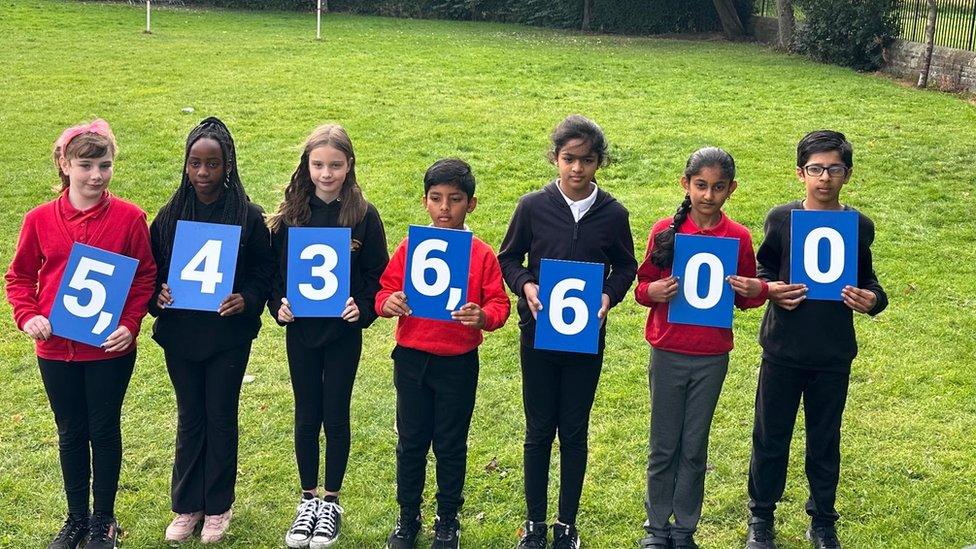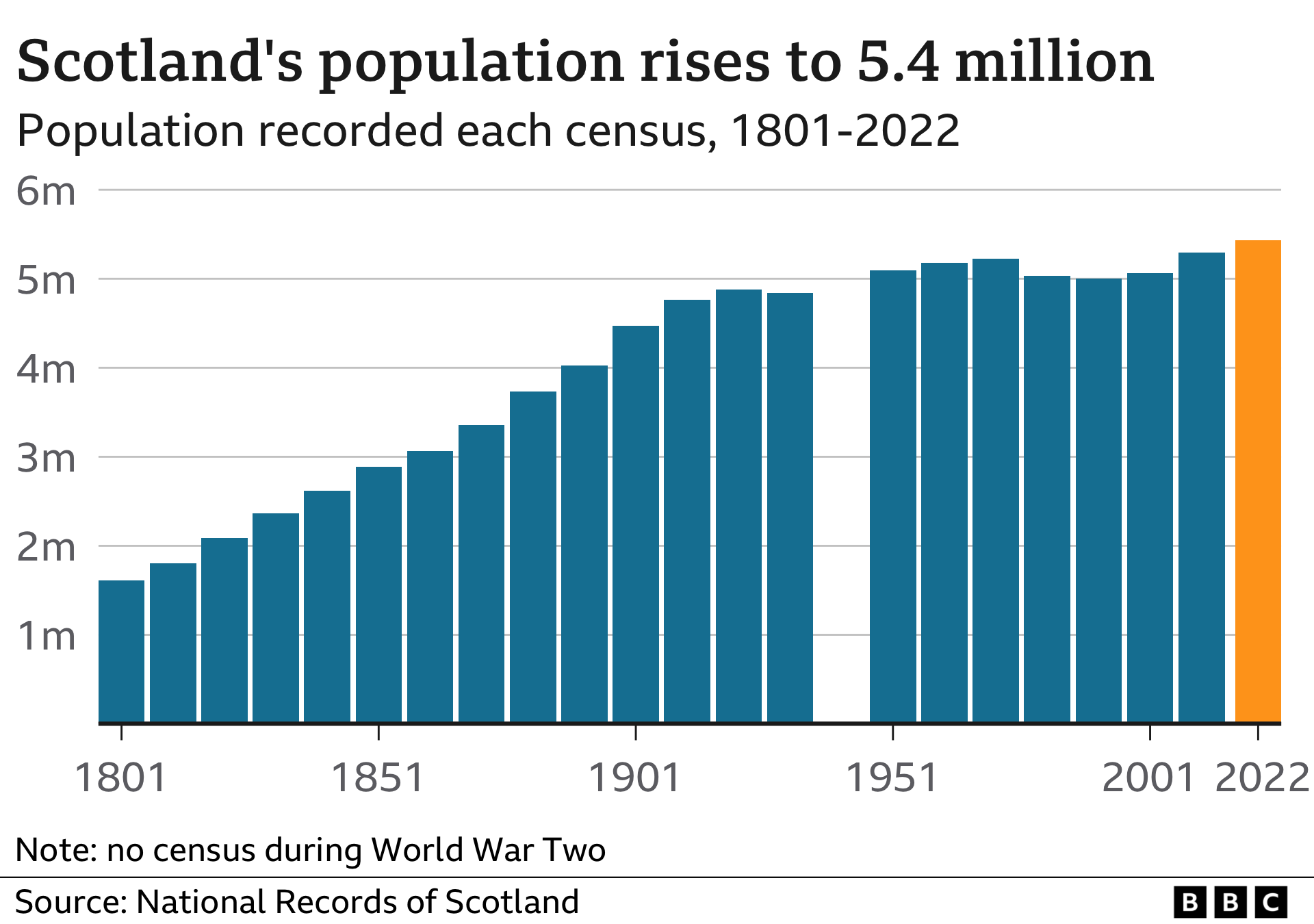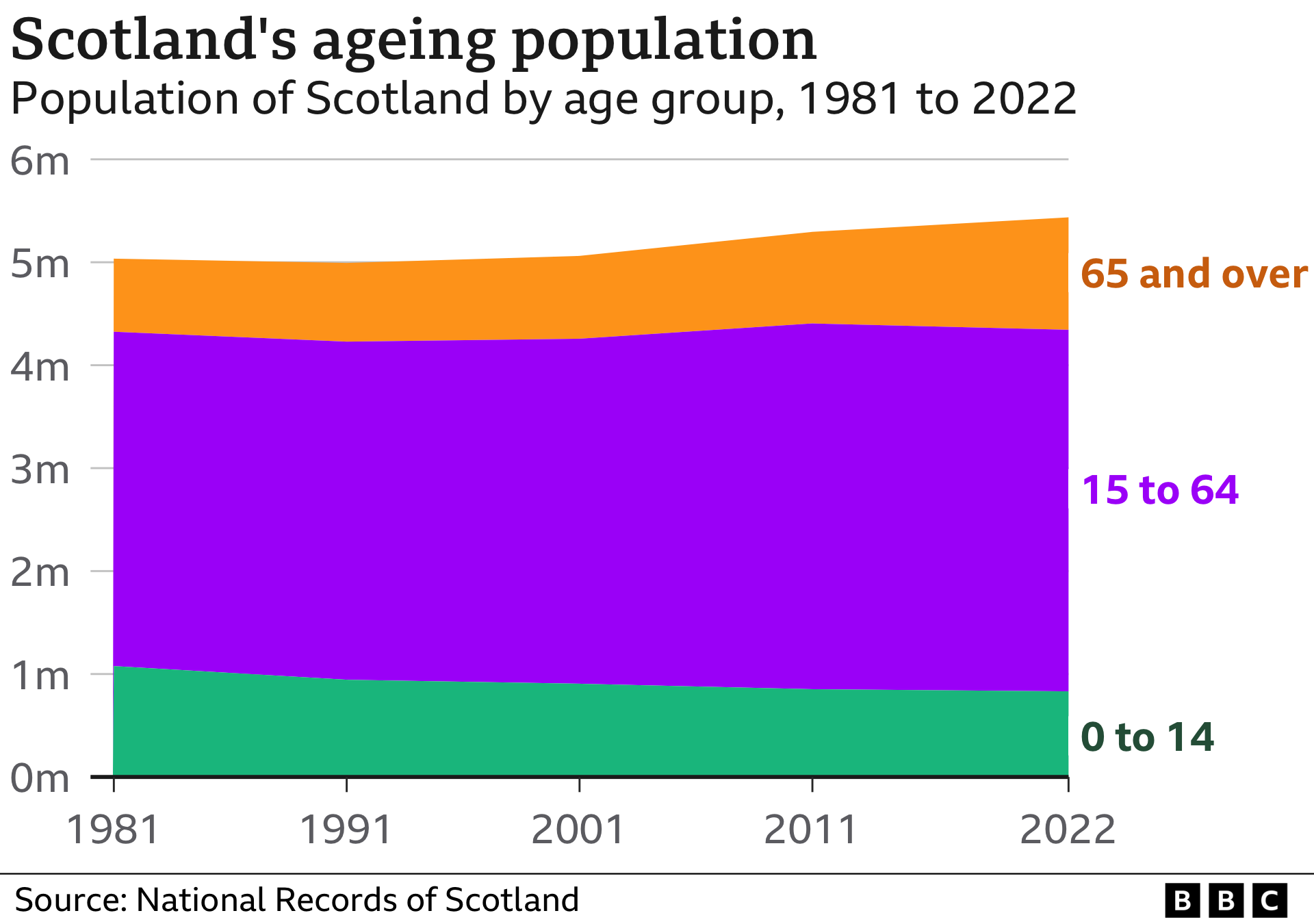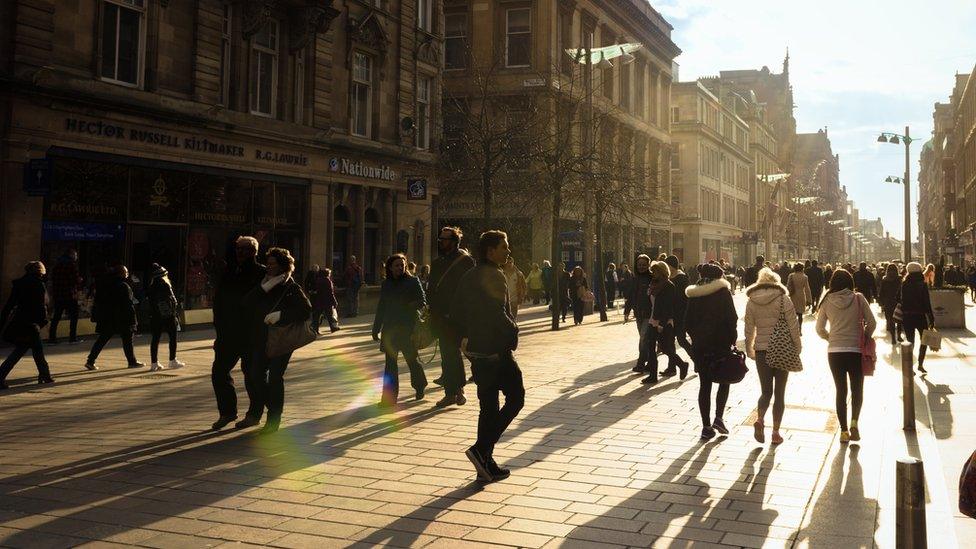Census: Scotland's population grew to record high
- Published

School children in Edinburgh hold up numbers to reveal Scotland's new total population
Scotland's population has risen to 5,436,600 - the highest figure on record - the first results from the 2022 census have shown.
It grew by 141,200 (2.7%) since 2011 - a slower rate of growth than the last census and one of the slowest UK rates.
The National Records of Scotland (NRS) data shows that without migration the population would have decreased by about 49,800 since 2011.
More than one million people are aged 65 and over - a 22.5% rise since 2011.
The census is usually carried out every 10 years and asks people to answer questions about themselves, their household and their home to build a detailed snapshot of society.
The results are intended to help organisations make decisions on planning and funding public services such as transport, education and healthcare.
While it is the highest population figure ever recorded, the 2.7% increase shows growth has slowed since the last census.
Between 2001 and 2011 the number of people living in Scotland grew by 233,400 (4.6%).

The other UK censuses showed different rates of population growth than in Scotland.
According to the Office for National Statistics, the population increased in England by 6.6%, in Northern Ireland it was 5.1% but in Wales it was lower than Scotland's figure, at 1.4%. This census data was collected one year earlier than in Scotland.
Shifting populations
Across Scotland, the population increased in 17 council areas between 2011 and 2022, with 10 areas seeing decreases and five seeing minimal change.
Most of the council areas in the central belt of the country saw increases in their populations, particularly those around Edinburgh.
The council area that saw the largest increase was Midlothian, jumping 16.1% from 83,187 to 96,600.

Na h-Eileanan Siar saw the biggest percentage decrease (down 5.5%) while the population of Inverclyde dropped from 81,485 to 78,400 over a decade.
The population of the Glasgow City council area is 620,700, up from 593,245 in 2011.
The City of Edinburgh council area also saw its population rise, up from 476,626 in 2011 to 512,700 last year.
NRS said these increases were driven by migration from both within Scotland and elsewhere.
Your device may not support this visualisation
A more detailed breakdown on how people responded to the census questions will be published next year.
Demographic changes
The census data illustrates the changing age profile of Scotland's population.
People aged 65 and over now account for a fifth of the overall population, with more older people (1,091,000) than those under the age of 15 (832,300).
By contrast, results from the 1971 census show there were twice as many people under 15 than 65 and over.
In 2011, the two age groups were of a broadly similar size.

Living alone is on the rise, with a 5.8% increase in the number of households with at least one usual resident (2,509,300).
This jump is higher than the increase in the overall population and the NRS points out older people are more likely to live alone or in smaller households.
Return rates
A "lessons learned" review of Scotland's census is being carried out after it struggled to achieve its target return rates.
The deadline had to be extended before it finally achieved 89% participation.

England and Wales held their census in 2021, with a 97% completion rate. The previous Scottish census, in 2011, achieved 95% participation.
However, the Scottish government delayed the latest one by a year because of the Covid pandemic, and by the initial deadline of April 2022 it had only achieved an average return rate of 79%.
Some experts suggested that decoupling it from the census in other parts of the UK may have resulted in less publicity and awareness.
Planning
NRS chief executive Janet Egdell said the data would be "vital for planning health services, education and transport" services for years to come.
Cabinet Secretary for Constitution, External Affairs and Culture Angus Robertson, said: "The census also shows that, in line with many other countries, our population is ageing.
"Understanding these changes in the population will allow local authorities and the government to adapt vital public services to better meet the needs of those living and working in Scotland."


NRS officials say they had to draw up a "ground breaking" strategy after the 2022 census failed to reach a 90% completion rate.
Critics will ask whether the need to break new ground could have been avoided in the first place and a lessons learned review is under way.
The Scottish government delayed the 2021 census for a year because of the pandemic, putting it out of sync with the rest of the UK.
For the first time people were encouraged to respond online and the eventual participation rate after the deadline was extended came in at 89%.
South of the border, the census went ahead as planned in 2021 and was completed by 97% of households.
The results of the Scottish census have been combined with other information to produce the stats which are being published from today.
NRS says an international steering group was brought on board to check what they were doing and provide "quality assurance."
As for the next census, a decision on whether it will be held in 2031 or 2032 has not yet been taken.
- Published28 June 2022

- Published14 August 2023

- Published16 August 2023
